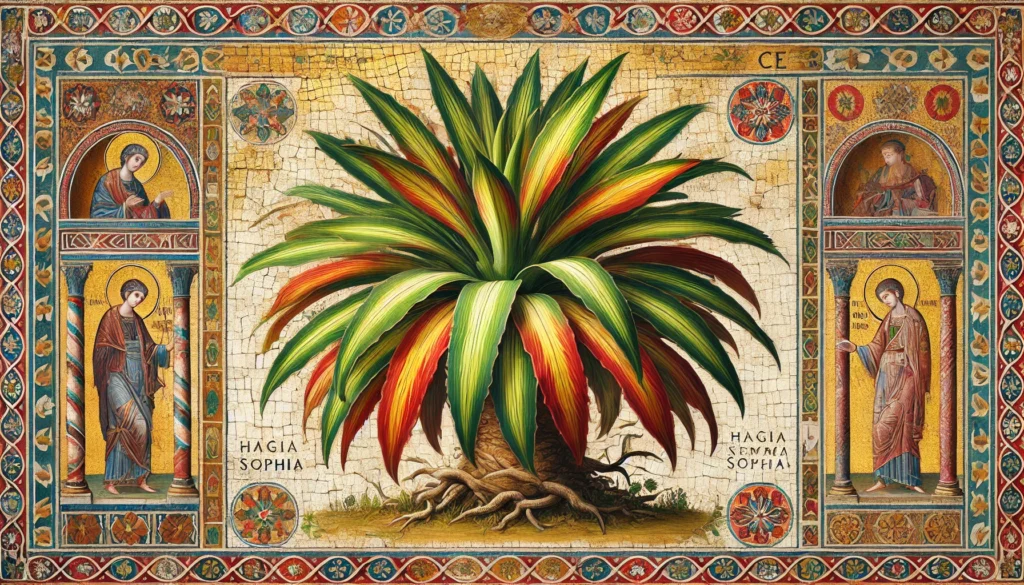

Home » Cat Plants » Giant Dracaena Plant: A Guide to Cat Safety

The Giant Dracaena (Dracaena fragrans), also known as the corn plant, is a popular houseplant that can be toxic to cats if ingested. While not technically an allergy, cats can experience adverse reactions and poisoning from consuming parts of this plant.
Giant Dracaena contains saponins, which are compounds that protect the plant from pests but can cause health issues in pets. This plant is commonly found in homes and offices as an attractive, low-maintenance decorative plant.
Ingestion may cause mild gastrointestinal upset, but is generally not life-threatening.
Ingestion can result in mild symptoms like vomiting, diarrhea, or drooling. Rarely fatal but may require veterinary care.
Eating these plants can lead to more pronounced symptoms like abdominal pain, lethargy, or difficulty breathing. Veterinary intervention may be necessary.
Ingesting even small amounts can cause severe symptoms like organ damage, seizures, or cardiac failure without rapid treatment.
All parts of these plants are extremely poisonous to cats and can quickly lead to death, even with immediate veterinary care.
** Please note: Please note that toxicity level can vary based on the amount ingested and the specific cat. It's always best to keep these plants completely inaccessible to cats and seek immediate veterinary care or call the poison hotline if you suspect your cat has ingested any part of a toxic plant.
If your cat has ingested parts of a Giant Dracaena plant, they may experience various symptoms due to the toxic saponins present in the plant.Common symptoms of Giant Dracaena poisoning in cats include:
If you suspect your cat has consumed parts of a Giant Dracaena plant, it is essential to seek veterinary care promptly. Your veterinarian will likely follow these steps to diagnose and treat your cat:

A: Yes, cats can be allergic to Giant Dracaena. Symptoms of an allergic reaction may include itching, sneezing, and skin irritation.
A: Yes, Giant Dracaena, also known as Dracaena fragrans or Corn Plant, is toxic to cats. Ingesting any part of this plant can cause symptoms such as vomiting, diarrhea, and drooling.
A: Symptoms of Giant Dracaena poisoning in cats include vomiting, diarrhea, excessive drooling, loss of appetite, and lethargy. Immediate veterinary care is recommended if ingestion is suspected.
A: To prevent contact, ensure that Giant Dracaena is not present in your home or garden. Keep your cat indoors or monitor outdoor activities closely to avoid exposure.
A: If your cat ingests Giant Dracaena, contact your veterinarian immediately. Do not induce vomiting unless instructed by a veterinary professional. Immediate medical attention is necessary.
A: Yes, Giant Dracaena is commonly found in homes and gardens as an ornamental plant. It is important to ensure this plant is kept out of reach of cats to prevent accidental ingestion.
The Giant Dracaena, or Dracaena fragrans, is native to tropical regions of Africa, including Sudan, Kenya, and Tanzania. It has been cultivated as an ornamental plant for centuries, with records dating back to the 18th century when it was introduced to Europe. The plant gained popularity in the 20th century as a hardy, low-maintenance houseplant that could thrive in a variety of indoor conditions.
In its natural habitat, the Giant Dracaena can grow up to 20 feet tall. However, as a houseplant, it typically reaches heights of 5-10 feet. The plant is known for its long, green, strap-like leaves that grow from a central cane or trunk. Some cultivars feature variegated leaves with yellow or white stripes.
Please note: The information shared in this post is for informational purposes only and should not be considered as veterinary medical advice.
🐾 A hilarious or heart-melting cat video
🐾 Our latest paws-on review of a cool cat toy